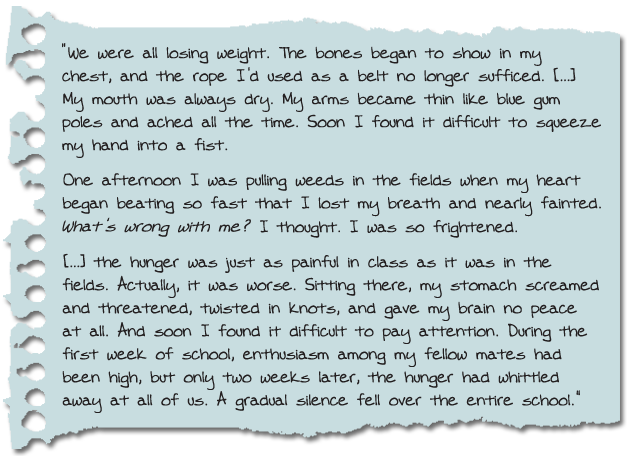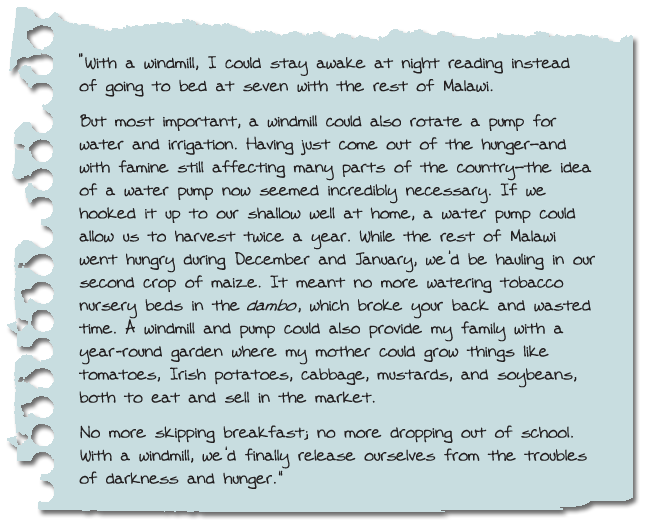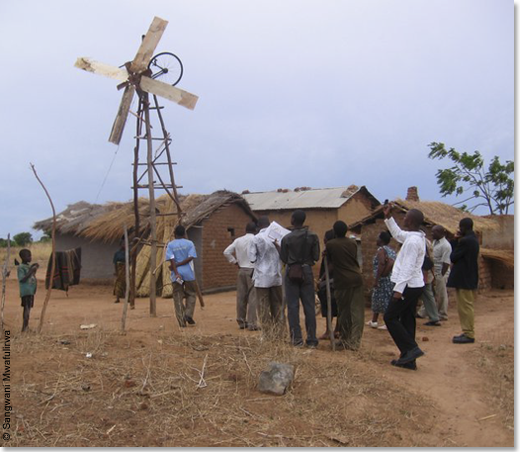
William had to drop out of school because his family couldn’t afford
to pay the $80-a-year tuition fee. He was devastated. Instead of going to school, William helped his father plant the next year’s maize crop. It was November, and the crops would be ready in late March. When the maize was finally ready to harvest, William and his family were ecstatic. He describes what it was like to eat a cob of corn after nearly six months of starvation.

Even though William hadn’t been going to school during the famine,
he continued to read and learn on his own. He borrowed a book, Using Energy, from his school’s library. It had photos of large windmills on its cover. The book said the windmills could create electricity and pump water. This gave William an idea—and hope for the future.

William built his

William’s first windmill was only 15 feet tall to begin with.
Later, William moved it away from his house and raised it
to 36 feet to make it more effective.
windmill out of scrap metal,
wood, plastic, and bicycle
parts. It took him two
months to do it. Many
people in his village thought
he was crazy for even trying,
but the windmill worked!
Through word of mouth,
newspaper and radio
reporters eventually heard
about William’s windmill.
They wrote stories about
him, and he was invited to a
big conference in the United
States. People were so
impressed with William’s
creativity and initiative, they
donated money so that he
could go back to school and
help his family and village.